All products featured are independently chosen by us. However, SoundGuys may receive a commission on orders placed through its retail links. See our ethics statement.
Movo UM300 USB Microphone review
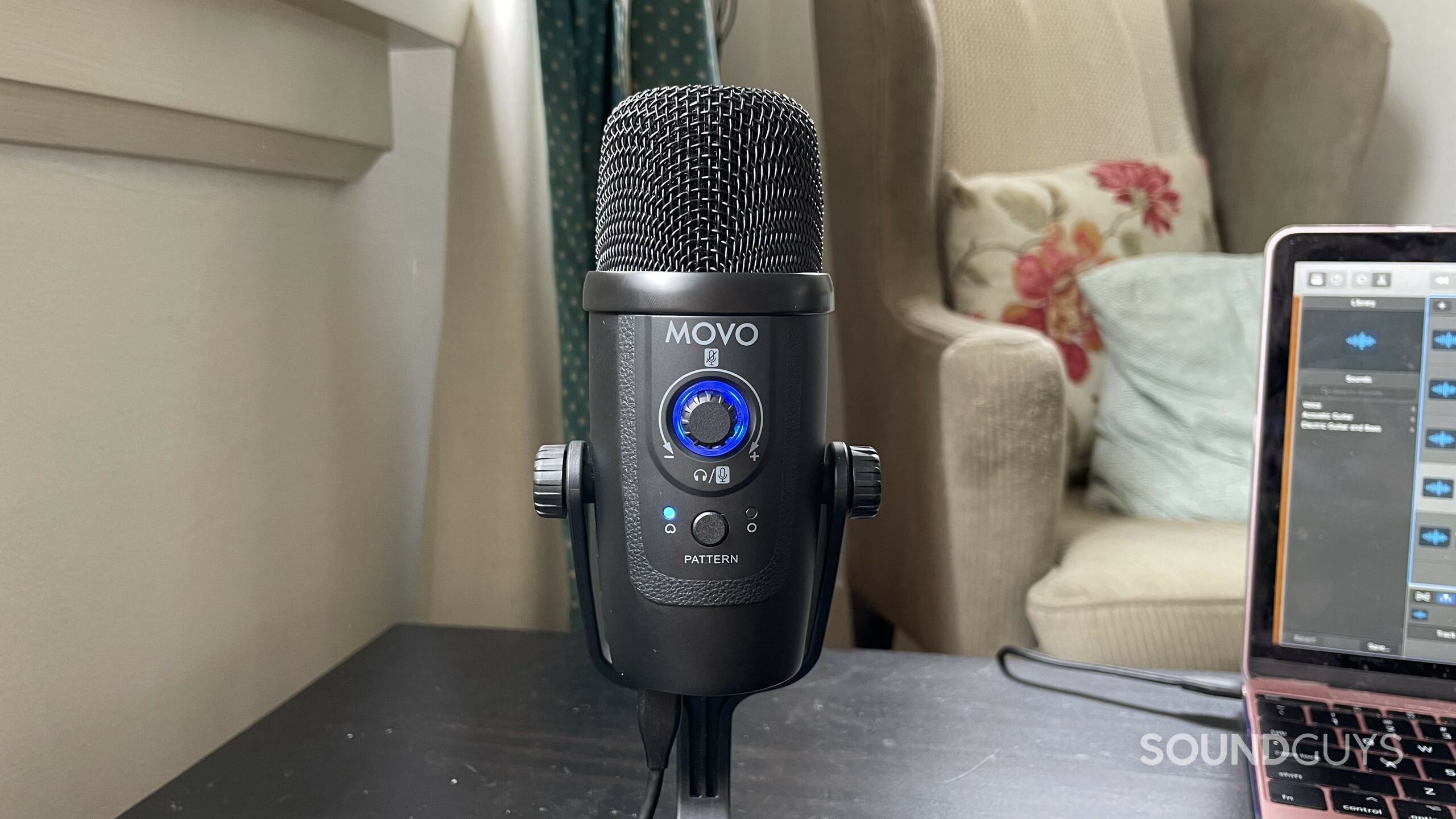
The Movo UM300 is the portable, pint-sized counterpart to the Movo UM700 USB Microphone. While the UM700 is an affordable mic, the UM300 is even cheaper and sheds some of the UM700’s features in order to shave $40 off the price. A reduction in price often comes with a reduction in quality, so let’s see if this budget-friendly microphone is still worth your time.
Who should get the Movo UM300?
- Virtual meeting hosts who don’t need studio-quality sound, but want something that sounds better than their laptop microphone should get the Movo UM300.
- Twitch streamers will appreciate the Movo UM300’s small and unobtrusive design that won’t distract viewers. The mic also attached to a boom arm for easy access.
How is the Movo UM300 built?
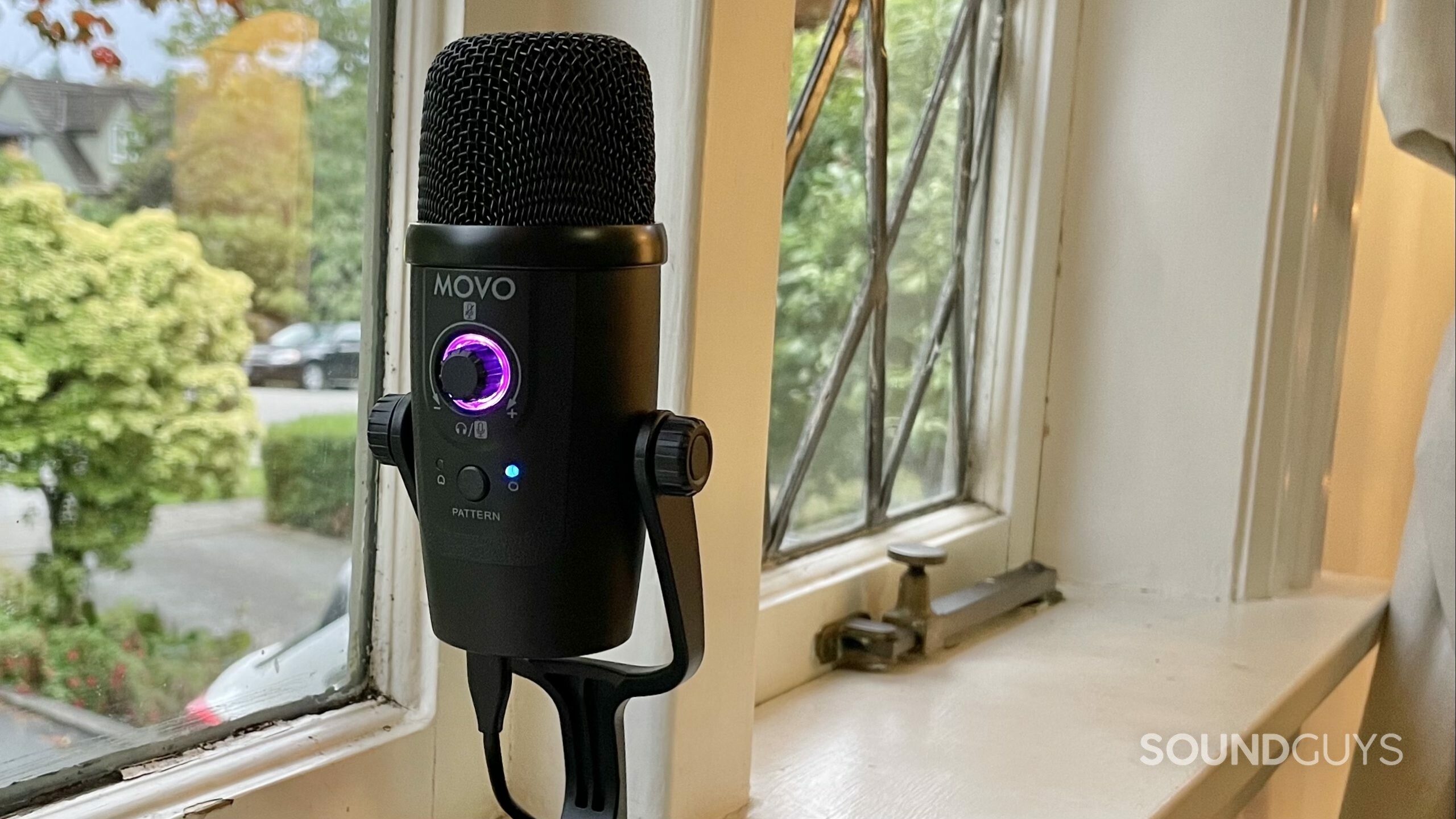
Even though the Movo UM300 is a budget USB microphone, it doesn’t skimp on the build quality. It has an all-metal build including a metal windscreen to help protect against plosives (harsh “p” sounds) and fricatives (“f” and “sh” sounds). A plastic button/dial controls the mute function, volume, and gain; there’s also a button for switching between polar patterns. The plastic controls don’t feel cheap, which makes the Movo UM300 feel like it’s worth more than it costs. On the bottom of the mic is a 3.5mm headphone monitoring jack, a USB-C input, and a 5/8-inch threaded mount.
The Movo UM300 comes attached to an adjustable desk stand. It is very sturdy and quite heavy, which is good because the microphone is lightweight and you don’t want it flying away. Rotating the stand’s knobs detaches the microphone, so you can attach it to another microphone stand with the 5/8-inch threaded mount.
Basic onboard controls allow you to make adjustments on the fly.
Movo also provides a USB-C to USB-A cable, a USB-C to USB-C cable, a Movo sticker, and some documentation. The included manual provides instructions about how to use the onboard controls as well as how to set up the microphone with your particular operating system. When you purchase the Movo UM300, it automatically comes with a one-year limited warranty. If you register the product by scanning the QR code on the mic’s box within 30 days of purchase, it adds on an additional year of warranty coverage.
What’s it like to use the Movo UM300?
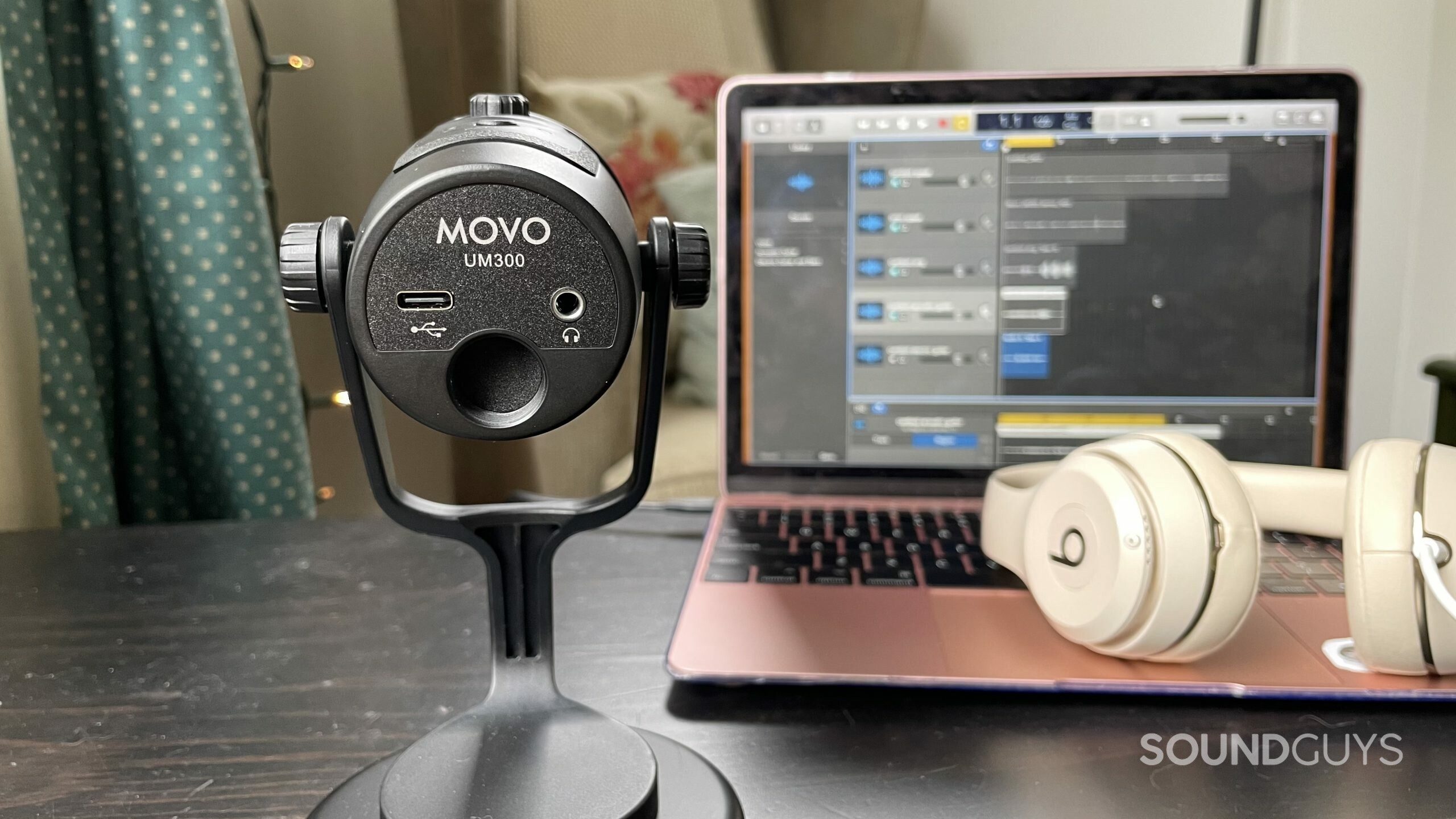
The Movo UM300 is compatible with Windows and Mac computers as well as any Android device with a USB-C input. When you plug the UM300 in, your computer automatically registers it as the default microphone input. This Movo mic doesn’t work when I connect a Tuwejia multi-port to USB-C adapter to the USB-C to USB-C cable before plugging it into my computer. However, it works when I plug the USB-C to USB-A cable into the adapter. Both cables work when plugged directly into my laptop, so this is likely an issue with the adapter and not the Movo cables.
To mute the Movo UM300, click the control dial/button once and the ring around the button will shine red. To switch the dial between headphone volume and gain control, press and hold it down. When you select volume control, the ring light glows blue, and when on gain control it glows purple. The dial doesn’t stop turning when you reach the maximum or minimum volume or gain setting, meaning the only way to know you’ve reached the maximum or minimum is with your ears.
As long as your device has a USB-C input, you can connect the Movo UM300.
Each time you plug the mic in, it reverts to the volume control setting and enables the last-used polar pattern. When you use the Movo UM300’s direct monitoring feature, the volume dial controls the headphone output volume. The 3.5mm monitoring jack works well and I never experience any output latency. When you mute the mic, the recording and direct monitoring cease, which should be a given but some microphones don’t work this way.
What recording patterns does the Movo UM300 support?
The UM300 has cardioid and omnidirectional polar patterns, so there are two ways the mic can pick up audio—from its direct front or from a 360-degree field around its capsule. To switch between polar patterns, simply click the button labeled “Pattern” and the LED indicator lights will shine depending on which pattern you have selected.
Related: How to read a polar pattern chart
How does the Movo UM300 sound?
The Movo UM300 doesn’t record the cleanest audio, and to be frank, its sound quality could use some improvement. It has a poor loudness tolerance, so if the gain is turned up too high or an audio source is simply too loud or too close to the mic, the audio sounds distorted and you hear a persistent buzz in the audio file. The Movo UM300 also produces feedback when the input is too loud, which yields an unpleasant screech. The mic records 24-bit/48kHz audio, but high-resolution audio recordings don’t matter much when the sound quality is poor.
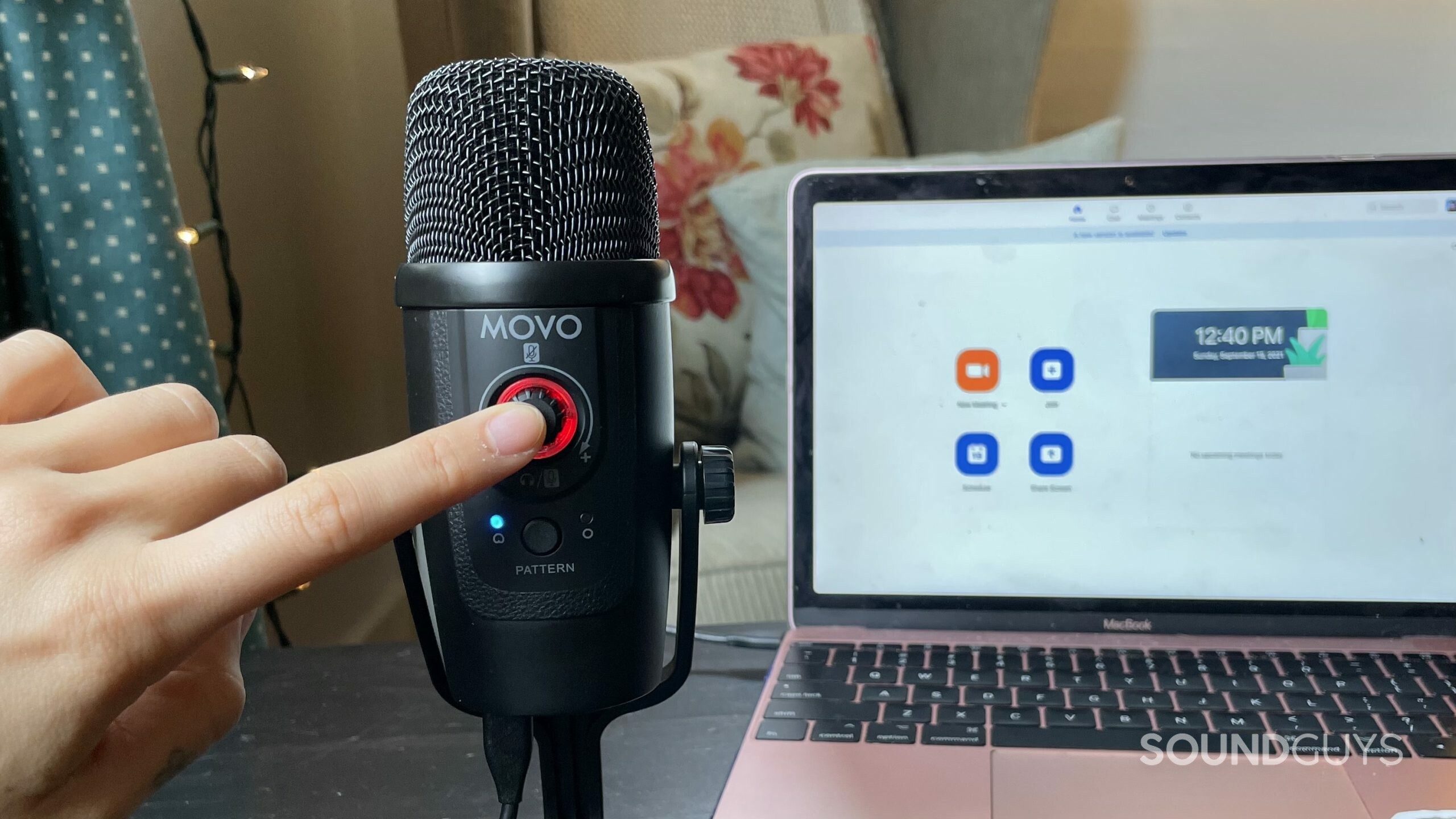
The cardioid polar pattern is intended to reject sound from the sides and back of the mic and record audio primarily from the direct front. In the cardioid speaking sample, you can hear that the sides and back of the microphone still pick up a fair amount of audio, and clarity is best at the front of the mic. My voice doesn’t sound completely accurate on this polar pattern and the audio is generally not very crisp. The Movo UM300 also records sibilant sounds (harsh “s” sounds), which could be mitigated with an external pop filter.
Movo UM300 cardioid speaking sample:
When I sing into the microphone with the cardioid polar pattern, I need to step far away (20 inches) to avoid feedback and clipping, even with the gain as low as it can go. When under these conditions, the audio still distorts a bit at the loudest portions of the recording around 0:13, 0:16, and 0:20. The audio is not very clear throughout the recording and I don’t feel comfortable using this microphone to record music of any kind.
Movo UM300 cardioid singing sample:
Movo states that the omnidirectional polar pattern picks up sound evenly from a 360-degree field around the mic’s capsule and that it has a low sensitivity to handling noise and vocal plosives. As you can hear in my omnidirectional mic sample, plosive sounds aren’t an issue. Even when I pick up the microphone and turn it around to test the different angles, the handling noise isn’t much of a problem. Not all sides of the mic sound record audio uniformly on this polar pattern, though the differences are subtle.
Movo UM300 omnidirectional speaking sample:
Again, I wouldn’t use the Movo UM300 to record music, but I tested it out with an acoustic guitar and an electric guitar plugged into an amp just to see how it performs with different audio sources.
Movo UM300 cardioid acoustic guitar sample:
Movo UM300 cardioid electric guitar sample:
How does the microphone sound to you?
Hold up! Something’s missing:
This section is typically where we display a frequency response chart to show you exactly where the audio output shines and where its deficiencies lie. Unfortunately, we’ve hit a technical snag in our testing. To combat this, we have an SCM-3 mic and we’ll be adding a speaker with standardized output samples to update our testing and data collection. It will take a while to reach our office in Canada, but we will update this review (and many others!) once we’re able with improved sound quality measurements and performance plots. These will be made obvious by an announcement explaining the change, and a new chart aesthetic.
Thank you for bearing with us, and we hope to see you again once we’ve sorted everything out.
Should you buy the Movo UM300?
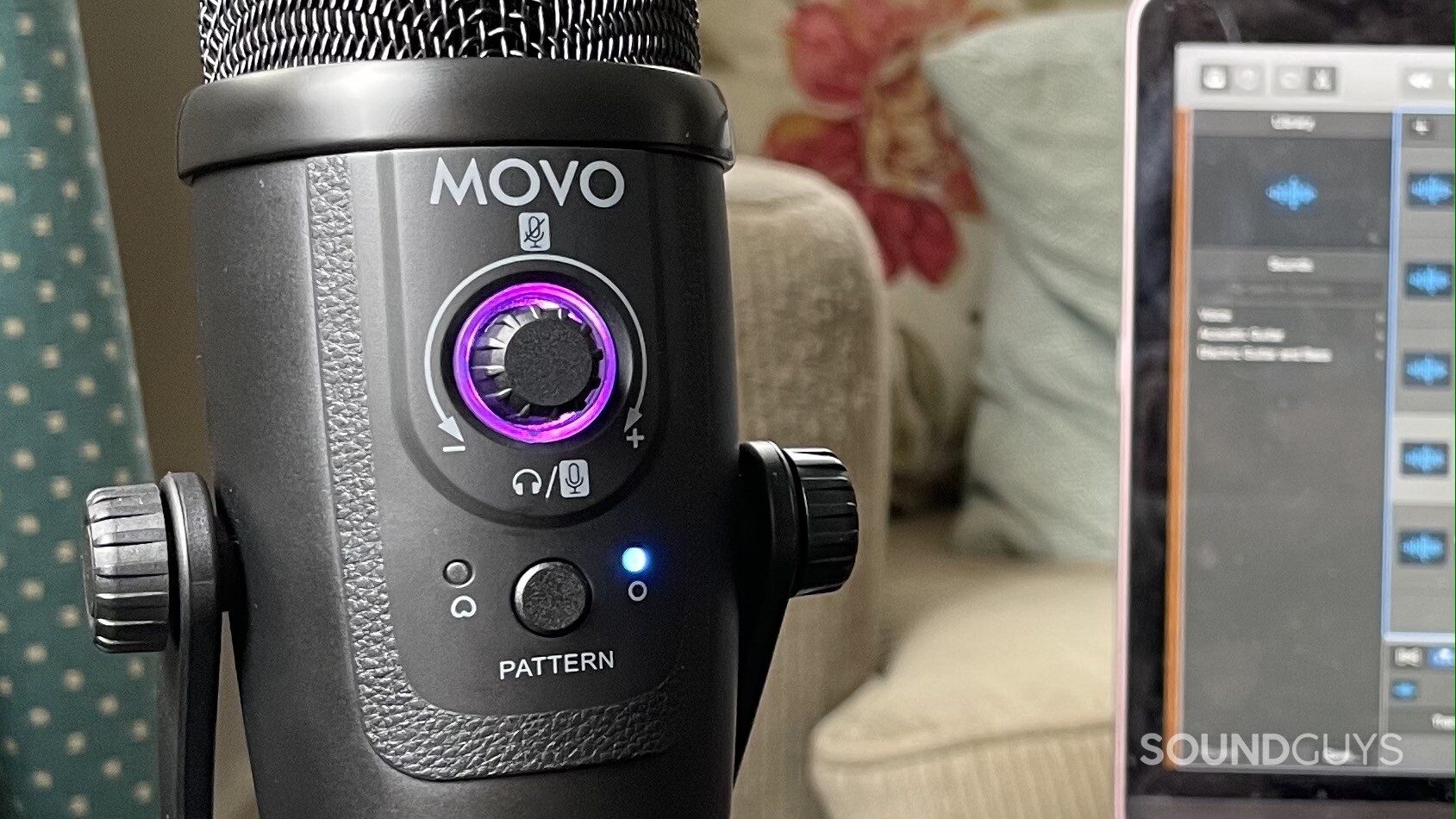
The Movo UM300 sounds better than the mic built into your laptop or headphones, but don’t expect it to have studio-quality sound. When you compare the audio quality of the UM300 to the more expensive UM700, it’s clear that paying a little more for something better is worth it. You could use the UM300 for Zoom meetings, gaming sessions, or other casual applications. It’s not a good choice if you intend to record a podcast or music though, simply due to its average sound quality.
The mic does have its perks—it’s well built and has convenient onboard controls. It’s also not every day that you find a budget microphone with two recording patterns. If you want to make a room recording of a meeting, the omnidirectional pattern will come in handy, and if you’re using the mic for gaming, the cardioid pattern will probably suit you better. Whatever your needs are, it’s nice to have two options. The direct monitoring feature is helpful for checking volume levels and making sure you’re muted when intended.
What should you get instead of the Movo UM300?
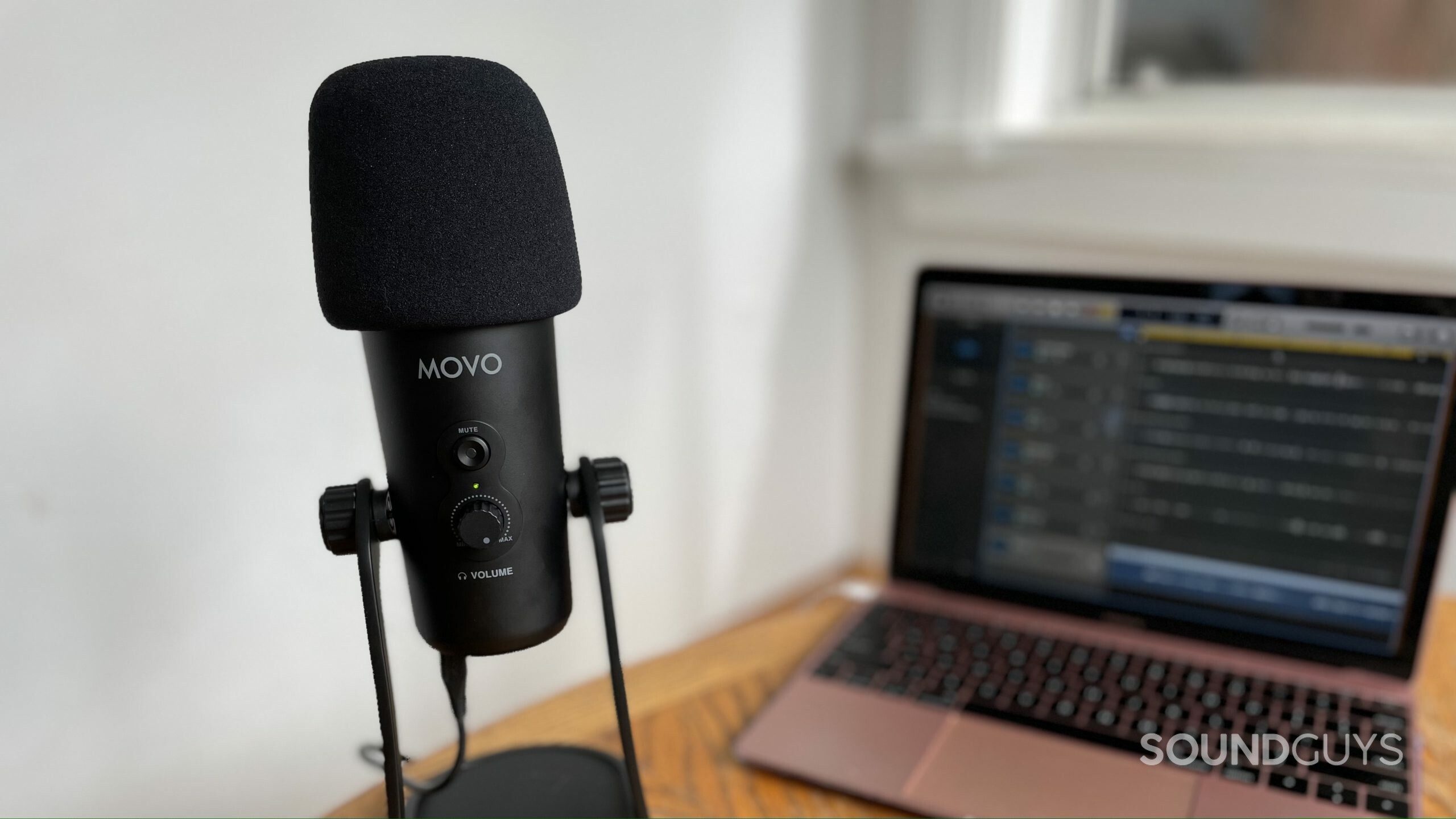
If you’re displeased with the Movo UM300’s performance when considering its price, there are plenty of alternatives out there. A cheaper mic that still offers the same two polar patterns as the Movo UM300’s is the JLab Talk GO USB microphone. It has its own drawbacks, like issues with its direct monitoring feature and volume control, but its sound quality is good for its price. It’s also more portable than the UM300 because its stand is collapsable and lightweight, though some will see this as a con rather than a pro if they want a sturdy desk stand.
If you’re willing to spend more for something better, check out the Movo UM700 that I mentioned several times throughout this review. It has four polar patterns rather than just two, has separate gain and volume control knobs that are easier to use than the UM300’s combined one, and has much better sound quality.